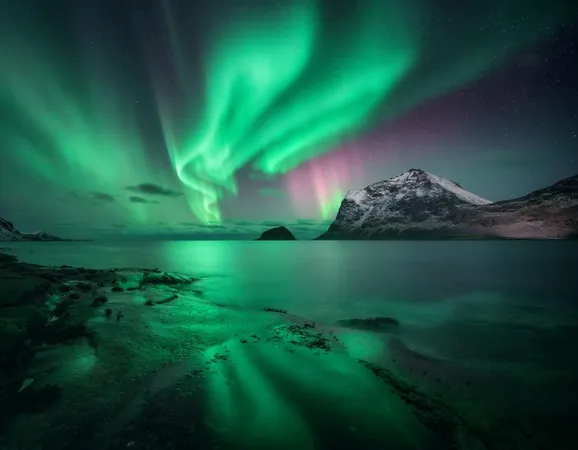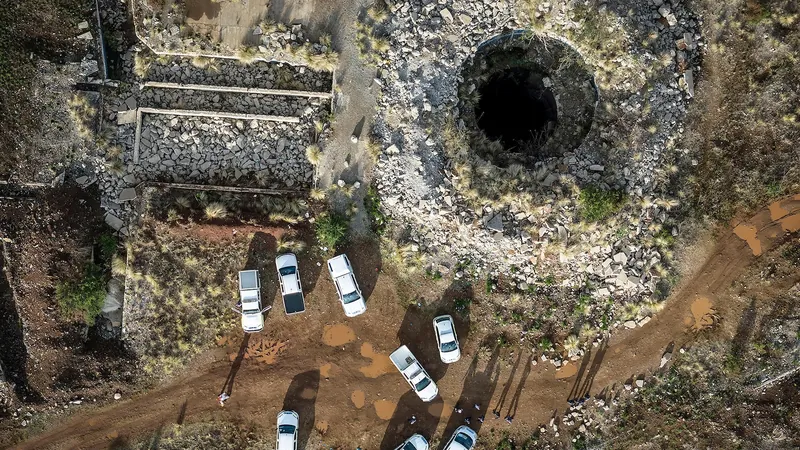
Are the Northern Lights a Hidden Danger? Experts Expose the Risks Behind the Beauty
2024-11-10
Author: Ting
The breathtaking beauty of the Northern Lights captivates millions every year, but are they actually dangerous? Recent powerful geomagnetic storms in May and October have led to stunning displays of the aurora borealis, reaching as far south as Arizona and Florida. Notably, last May’s display was likely the strongest in hundreds of years. But what does this mean for us?
While the ability to witness these mesmerizing lights is generally safe for viewers, the reality is more complex when it comes to the effects of geomagnetic storms. These storms, caused by solar activity during the sun's 11-year solar maximum cycle, can result in significant disruptions to our planet's infrastructure.
Understanding Solar Flares and Coronal Mass Ejections
Solar activity is primarily classified into two events: solar flares and coronal mass ejections (CMEs). As we are currently witnessing increased solar activity during this solar maximum, these phenomena have surged in frequency and intensity. Solar flares, which are massive bursts of radiation emitted from sunspots, travel to Earth at light speed, taking only eight minutes to arrive. While they can momentarily disrupt GPS systems and cause radio blackouts, experts like Andy Gerrard from the New Jersey Institute of Technology reassure us that commercial flights are equipped with backup systems that mitigate risk.
In contrast, coronal mass ejections consist of enormous clouds of charged particles and magnetic fields propelled into space. They can significantly alter Earth’s magnetic environment, often creating those spectacular auroras we admire. However, powerful CMEs have the potential to wreak havoc on our technological systems.
The 2023 Solar Events
The G5-rated geomagnetic storm in May, while not as severe as it might have been, resulted in real-world consequences. It caused disruptions to SpaceX’s Starlink satellite service and impaired the accuracy of GPS systems vital for modern farming practices. Tim Marquis from John Deere warns that solar storms create a ‘fog’ of charged particles, leading to potential navigational inaccuracies that could affect agricultural productivity.
Interestingly, while May's storm had significant impacts, the history of geomagnetic storms reveals that truly devastating events are rare. The last few notable solar superstorms—like the infamous Carrington Event of 1859—have occurred over a century ago.
The Carrington Event: A Historic Precedent
The Carrington Event, which occurred on September 2, 1859, remains the most intense solar storm on record, causing spectacular auroras globally but minimal disruption to a pre-electric society. However, if a similar event were to occur today, experts caution that the outcomes could be catastrophic. The 1989 Quebec blackout caused by a solar storm demonstrated how vulnerable modern power grids are to such natural phenomena.
In the event of another Carrington-like superstorm, experts estimate a potential cost of $2.5 trillion in damages, which could disrupt global power systems and even internet connectivity through undersea cables.
Current Preparedness for Solar Threats
Today, local power grids have made significant advancements in resilience, capable of quick recovery from outages caused by solar activity. However, a superstorm event like the Carrington Event could challenge these improvements. Billions could be at stake, not just for power but for global communications as well.
Conclusion: The Paradox of the Northern Lights
While the Northern Lights are a magnificent spectacle, they remind us of the delicate balance we maintain with nature's forces. Experts like Bill Murtagh from NOAA acknowledge the paradox—our fascination with the auroras must be tempered with caution about the potential risks to our infrastructure. As we continue to enjoy the beauty of the aurora borealis, scientists and engineers are working diligently to prepare for the uncertain impacts of solar activity in the future.
So next time you gaze up at the Northern Lights, remember: beauty and danger can coalesce in the dance of the cosmos!


 Brasil (PT)
Brasil (PT)
 Canada (EN)
Canada (EN)
 Chile (ES)
Chile (ES)
 España (ES)
España (ES)
 France (FR)
France (FR)
 Hong Kong (EN)
Hong Kong (EN)
 Italia (IT)
Italia (IT)
 日本 (JA)
日本 (JA)
 Magyarország (HU)
Magyarország (HU)
 Norge (NO)
Norge (NO)
 Polska (PL)
Polska (PL)
 Schweiz (DE)
Schweiz (DE)
 Singapore (EN)
Singapore (EN)
 Sverige (SV)
Sverige (SV)
 Suomi (FI)
Suomi (FI)
 Türkiye (TR)
Türkiye (TR)